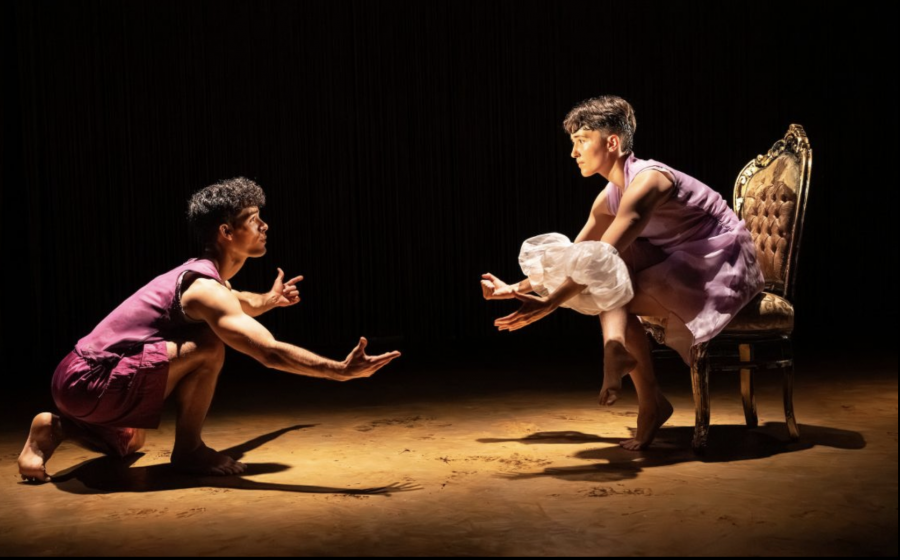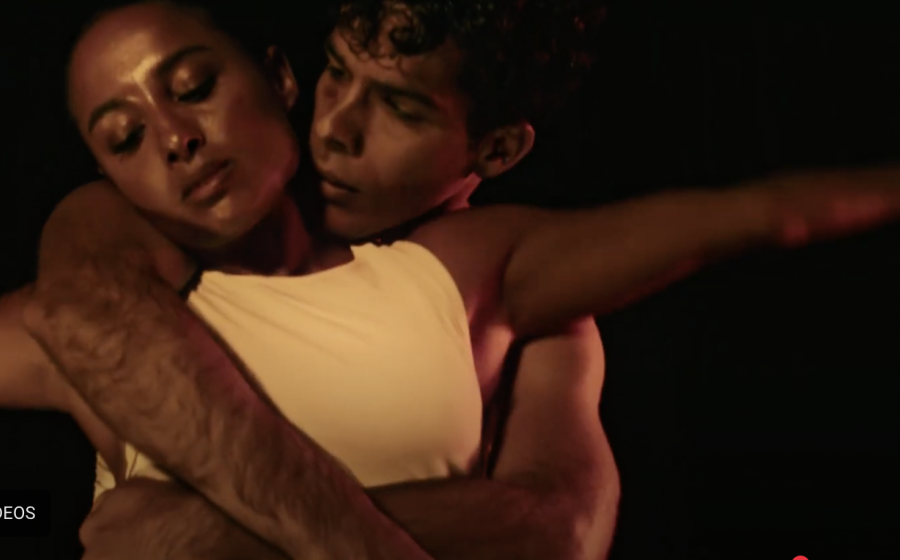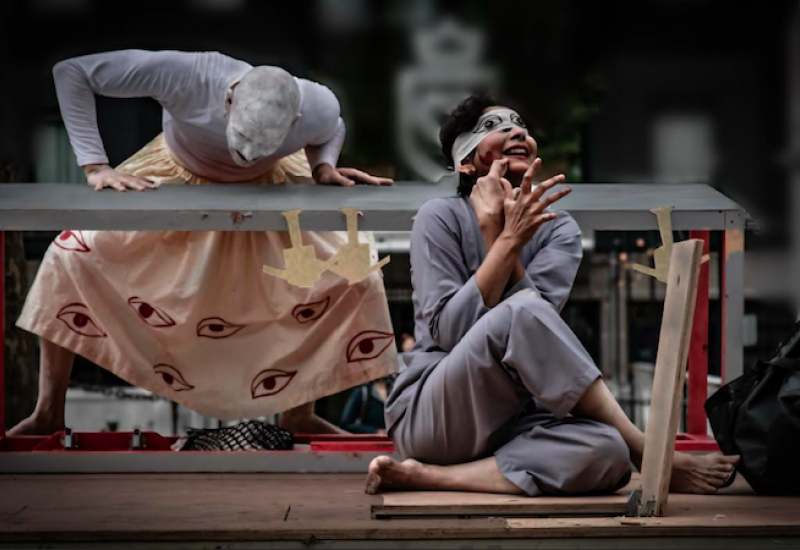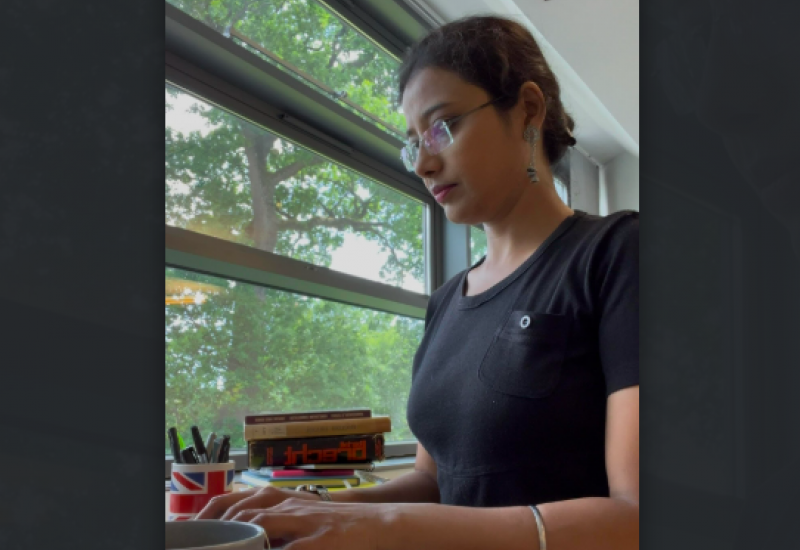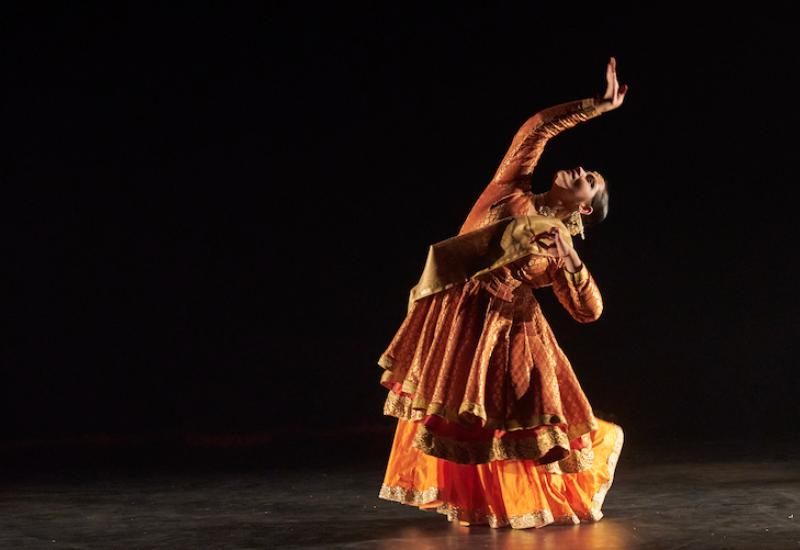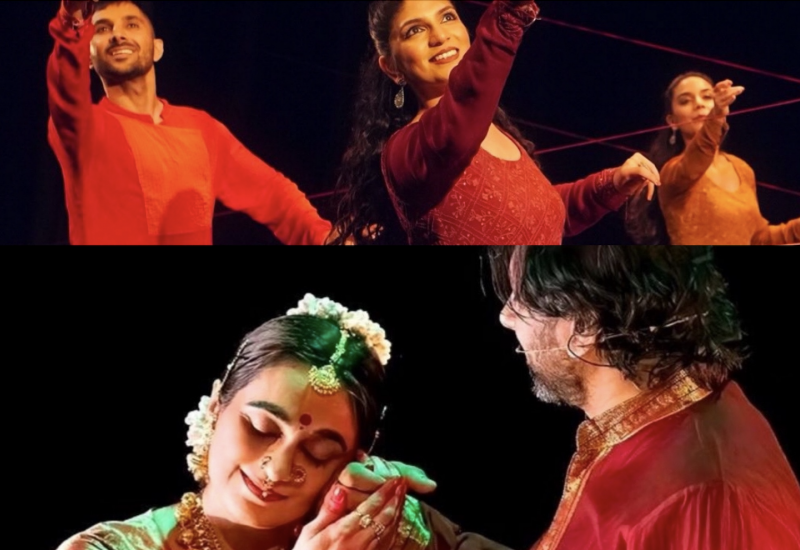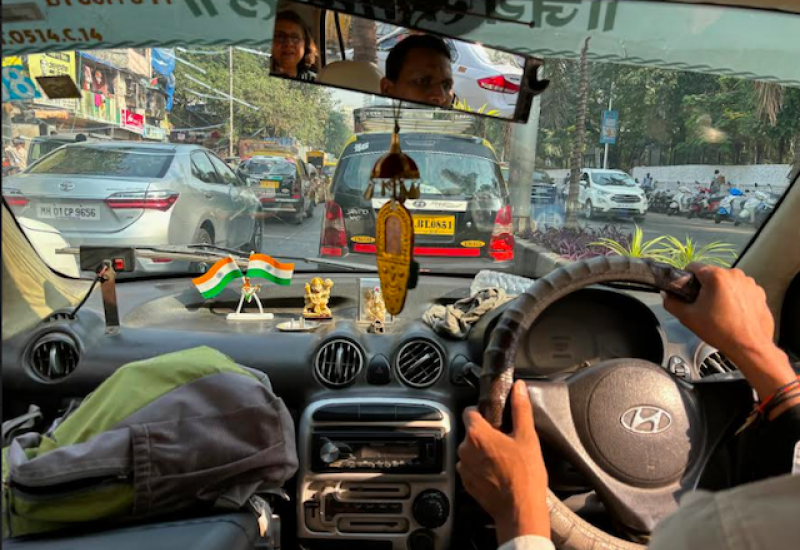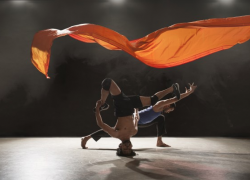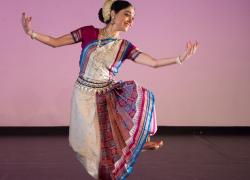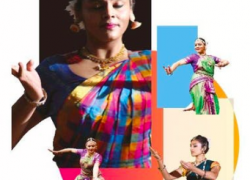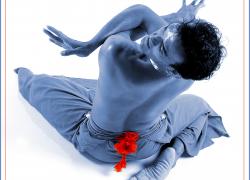We, Caliban – Watching dance, thinking theatre
Shobana Jeyasingh Dance Company
2 October 2025
Mayflower Studios, Southampton
Ranjini Nair, dance scholar and kuchipudi practitioner, reflects on her first experience of watching the work of Shobana Jeyasingh live.
As my train made its journey from London to Southampton, the windows clicked through scene after scene filled with warm autumnal light; tall buildings falling away to rolling fields to flashes of the sea as my destination approached. However, only minutes after I began my walk from Southampton Central, I came across a small crowd of people shouting slogans. Their hands held the white and red crossed St George flags, and flapped Union Jacks. I crossed the road, immediately made uncomfortable with who I was, how I looked, and the show I had come to watch. As I continued on my way, on the other side, I soon realised that these St George flag holders were involved in a verbal altercation with a group of Palestinian supporters. I silently cheered for the Palestinian supporters, from the other side, and immediately felt safer. But I couldn’t shake off that discomfort, and rather than roaming the city as I had planned, I settled into a board game cafe right next to the theatre to await the start of the show.
I thought of how almost fitting it was that the first sight to greet me when I’d come to watch Shobana Jeyasingh’s We,Caliban, advertised as 'an inventive, sideways look at The Tempest', was this run-in between two flags, whose waving, in the current context, carried starkly different messages. One othered you, and one reminded you that no place was home if it supported another’s loss of home. Shobana Jeyasingh is a British choreographer and the founder of Shobana Jeyasingh Dance, with practice spanning almost five decades. Born in Chennai, India, she has lived in Sri Lanka and Malaysia before moving to the UK to pursue a master's degree in Shakespearean studies at the University of Sussex. Though I had come across Jeyasingh’s work before, especially since I am interested in retellings of oriental ballets and she’s created Bayadère – The Ninth Life, this was the first time I watched her work live.
The time in the cafe passed swiftly since I always pack a book to read (Brotherless Night; I highly recommend it). Soon I found myself inside the Mayflower Studios, with an excellent view, seated centrally, and at a vantage to survey all the ensuing action with ease. At promptly the scheduled time, the theatre darkened and the dancers padded in to take their places, the audience ready to be transported to Caliban’s island.
As the lights turn up gently, the audience is greeted with the one dancer holding a book, turning its pages, being held aloft by other dancers. A prologue; the scene unfolds further, as another dancer breaks away to pick up a book from a pile placed in the centre, and suddenly there’s a swarm of dancers performing solos that turn duets, only to split and meander into threes, ones, and two, a stream of movement that is pleasing to watch. Suddenly, the music, which felt tender, green and alive, changed. An undercurrent of unease swept through as the bodies on stage tensed and the movements became sharper and more hectic, and the books were discarded. Is it defence? Attack? Either way, a paradise is lost.
From this frenzy, the scene shifts to one more familiar to readers of Shakespeare’s The Tempest. Prospero, enthralled by his books and his magic is laid out to sea with his daughter Miranda, betrayed by his brother Antonio; and finally father and daughter find themselves washed ashore, exhausted, onto Caliban’s island. In the pause, as Miranda and Prospero lie in the darkness the visual projections and voiceovers create a palimpsestic experience for the viewer, as a line from the British politician Charles Grant views on India cut through the audience; 'that they are a people exceedingly depraved'. Fragments of such historical texts are scattered across the performance both visually via projections and via voice-over, as the edges of fiction bleed into the fact. These texts anchor the audience, reminding them that Shakespeare’s fiction of a stolen land, with its inhabitants deemed savage, and the spinning of narrative to suit newly arrived people who see the land as a veritable tabula rasa, mirrors the realities of colonisation.
And, indeed, as Prospero awakens and begins to take charge of the island, the native inhabitants at one point drop the books they hold, and mimic Prospero’s movements. The books, which weave in and out of the scenes, throw up questions of knowledge, ownership and more centrally whose knowledge is seen as worthy.
The duet between Caliban and Miranda marked the highlight for me. As Miranda tries to teach Caliban her language, it is made clear that he already has his own. Her insistence makes him conform, even as snatches of his tongue run riot, and at points it almost seems as though Miranda will concede. It is awash in this exchange that the performance has them almost become lovers – till Prospero charges into the scene, and the narrative shifts, framing Caliban as an animal who cannot control his lust and who threatens Miranda’s virtue; the narrative more familiar to readers of the original.
With a sixty minute run-time, the scenes were taut and pulled fresh across the spectator’s eyes, and I barely noticed the hour run out. The dancers brimmed with energy, the lighting design aided the imagination, and the visual projections added layers to the retelling. The only notes I left with were questions about the choices made in creating this piece. I wondered why Caliban was never given a solo. I wondered why it was Prospero, Miranda and Antonio who were marked out by costume, while Caliban’s costume merged with the other dancers. I wondered how these two choices might have shifted how the audience would see how Caliban occupied space, language and creativity. Perhaps, I just wanted to see more of the Calibans and less of the Prosperos.
And more questions about where other retellings could go. How was the island Caliban bequeathed to him by his mother Sycorax different from the one Prospero created? How did power operate there? Was it the calm idyll we caught a glimpse of in the prologue? I left hungry. To read The Tempest again. To read A Tempest by Aimes Cesaire. To read Wide Sargasso Sea again. And in the end, art that redirects you to more art is a good thing.
Ranjini Nair recently completed her PhD at the University of Cambridge, where her research focused on Indian dance and its replication of socio-religious hierarchies. She continues to teach part-time at the university, writes on dance and performance, and is building her dance and teaching practice delivering workshops and guest lectures.

